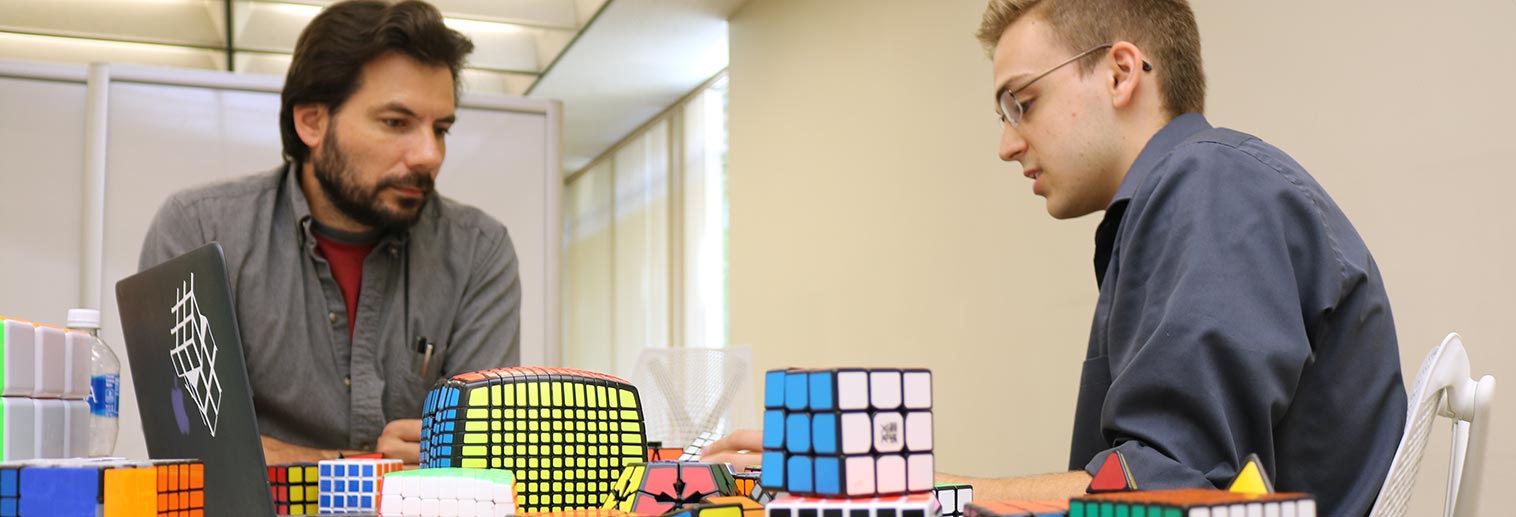Bryan Harvey '19
"An Algebraic Investigation of Bandaged and Constrained Rubik’s Cubes"
Major/Minor: Physics, Chemistry, Mathematics
Hometown: Brodheadsville
Project Advisor: Dr. Kevin Hartshorn
Briefly describe your project.
Dr. Hartshorn and I took a look at Rubik’s Cubes with restricted movement. For instance, if you take a solved Rubik's Cube and taped any 2 pieces together, how would that affect the nature of the puzzle? We looked at this question and others from a mathematical standpoint.
Why did you decide to turn your idea into a SOAR project?
I have been solving Rubik’s Cubes for many years now. When Dr. Hartshorn and I were looking for SOAR ideas, I pitched a variation of Rubik’s Cubes called bandaged cubes (the ones with tape on them). My background in twisty puzzle theory and his knowledge in abstract algebra made it seem like a good topic to tackle, and so we decided to conduct research.
How did your faculty advisor guide you through your research?
Dr. Hartshorn was a true pleasure to work with all summer, and continues to be be extremely helpful with this project. He has helped me with the mathematical aspect, and mentored me along the way in the writing portion of the project. I have also learned a considerable amount about my own hobby, and have accidentally created a few puzzles that to this day have not been able to solve.
What has been your biggest obstacle so far?
To analyze these cubes mathematically, we needed to have a model that described them. Unfortunately, the model commonly used to describe the original Rubik’s Cube does not work on these variant cubes with restricted motion. Almost half of the project was spent coming up with a clean way to fully describe and model the puzzles.
What has been your biggest takeaway from this experience?
I have learned a lot about mathematical research and writing which will carry with me forever.
What was the result of your project?
We discovered a number of cool patterns and interesting restrictions, and we found that most of the restrictions are a direct cause of parity, and how is must be maintained on a Rubik’s Cube. We are still investigating some additional topics that came up at the end of the project, where 2 seemingly identical ‘groups’ may actually different.
Will you expand on your research after this summer is over? If so, where would you like to see it go?
Our project is ongoing and we are planning on getting an article published on the topic.
In your own words, how do you feel about being awarded this opportunity?
This was an overall great experience in every way imaginable.

